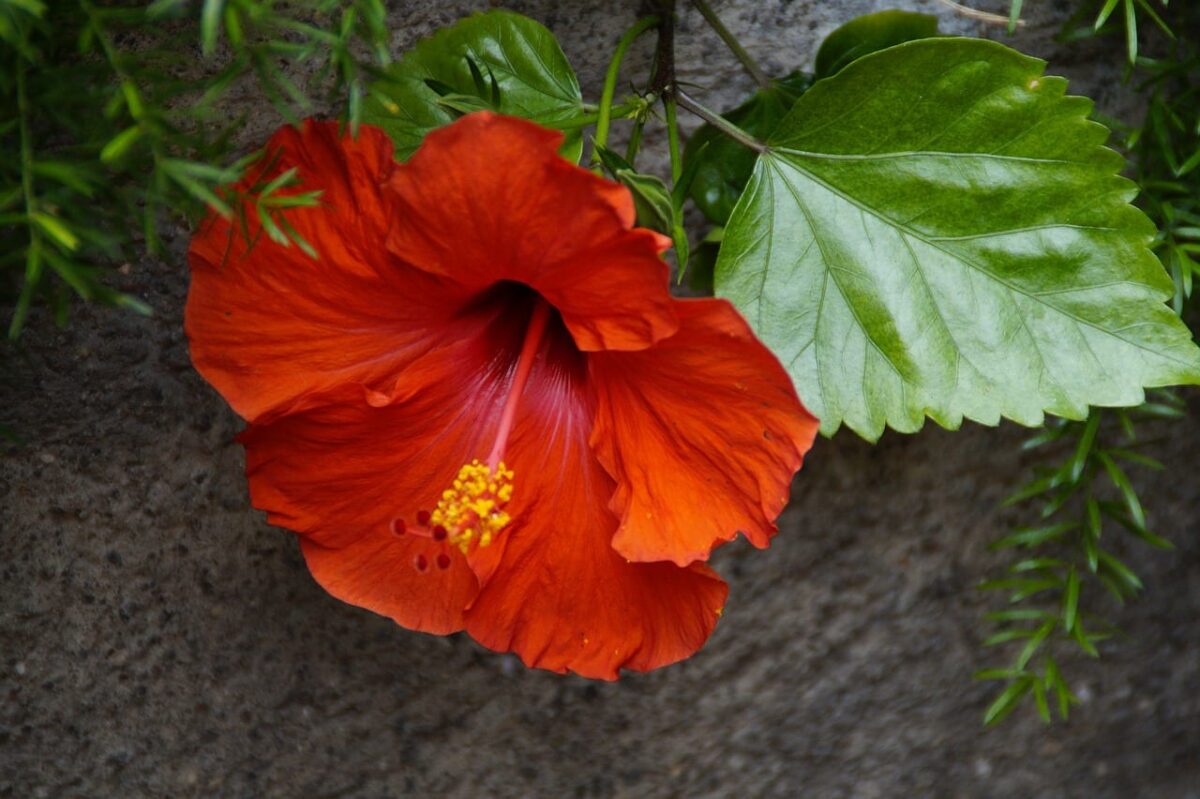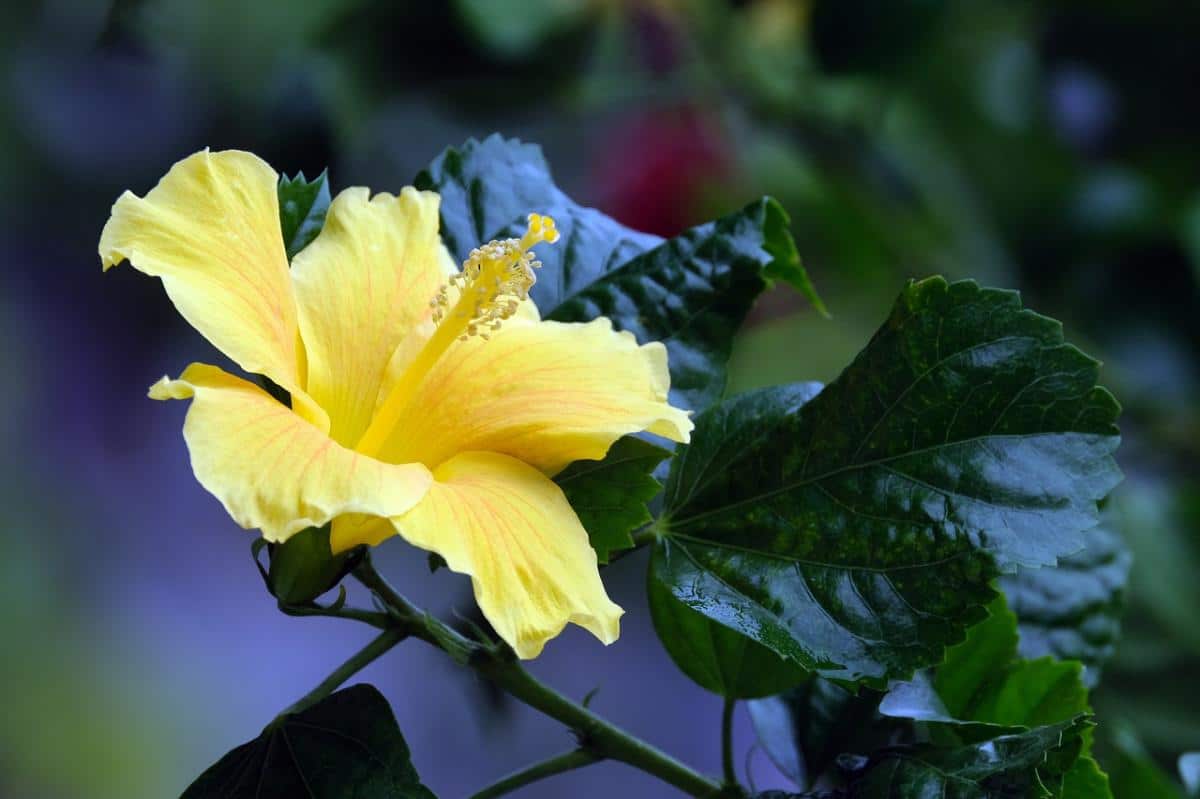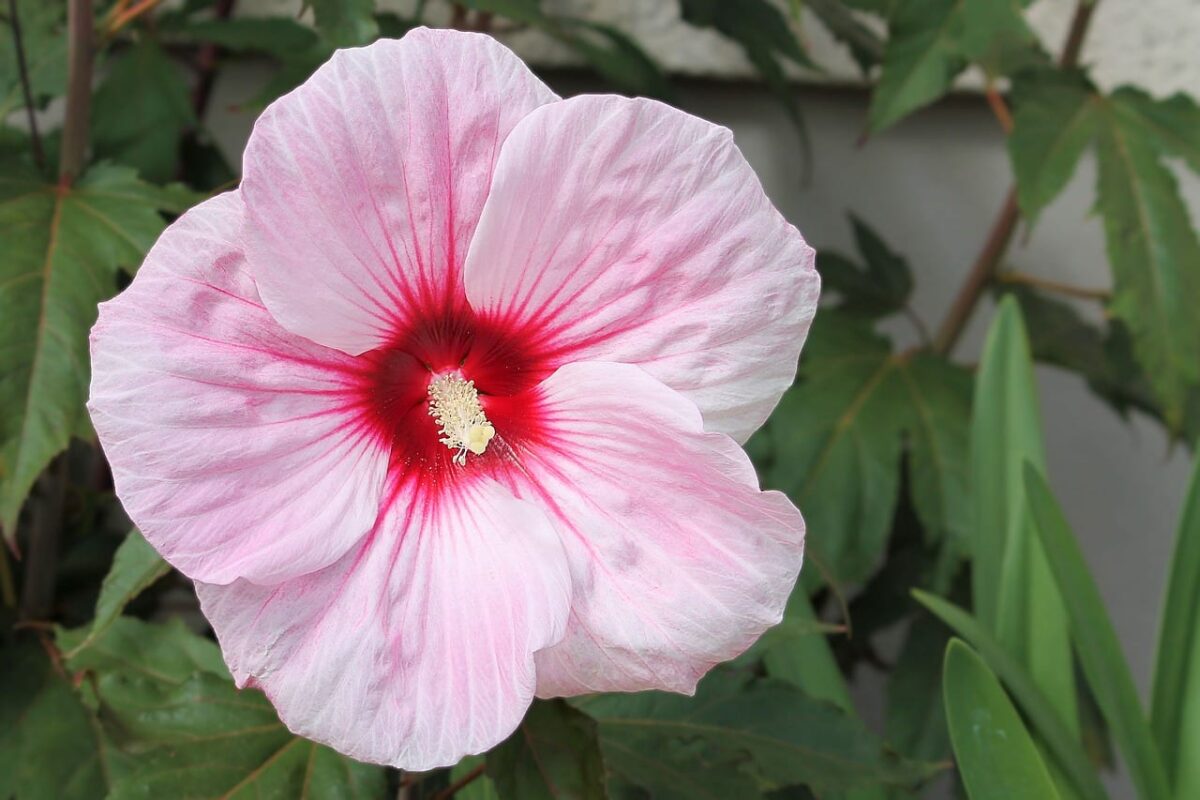
The Rosa de China hibiscus is one of the most loved by gardeners: although its flowers do not remain open for more than a day, it produces in such quantity that there are always many open or to open ... except when temperatures drop. After the summer, the plant prepares to cope as well as possible in autumn and, above all, winter.
But if it is the first time that we have one, it is very possible that we have many doubts about how to care for hibiscus in winter. If that is your case, do not worry because we will tell you everything you need to know.
How to take care of the China rose during the winter?
Protect it from low temperatures
When winter approaches one of the things we have to do is protect the hibiscus from the cold before temperatures drop below 10ºC, especially if we live in an area where frosts usually occur. Although it resists well up to -1ºC and even -2ºC if it is for a short time and there are occasional frosts, so that it can sprout strongly in spring it is highly recommended to avoid exposing it to these values, as they weaken it a lot (in fact, I myself have some specimens planted in the garden, such as the double china rose, which lose their leaves every winter, despite the fact that they are evergreen). Taking this into account, we can protect it with plastic or put it inside the house, in a room with plenty of natural light.
An extra protection
If we want, we can add a small spoonful of nitrophoska (for sale here) each 15 days. This will help keep the roots warm, which will prevent them from suffering from the cold. It will not help you that much to grow, because at this time you only use energy to stay alive.
Another option, if we prefer to use products of organic origin, is to put a mulch of leaves or bark on the ground. Thus, we will also ensure that they do not feel the cold so much.
Irrigation yes, but without overdoing it
Now, let's move on to irrigation. The frequency of irrigation has to be much less than what we were following during the summer. With the arrival of autumn, the days become shorter but also colder, and as soon as it ends and gives way to the winter season, you have to water much less. The question is, how often? It will depend on where the hibiscus is and the climate in the area, but it should generally be watered once or twice a week. In addition, it is advisable that the water is rather warm, because if it is cold the roots will suffer.
And by the way. if it is in a pot you can put a plate under it, but remember to drain it after watering the plant. This is something that you should always do, but in winter it is more important if possible, because if it happens that the dish remains full of water for longer than necessary, it would increase the risk of the roots rotting.
You can not prune it until the temperatures recover

And the rush is not good at all. If we can a hibiscus in the middle of winter and a frost comes, I can assure you that it will suffer a lot because the wounds during that season take longer to healBecause the plant channels all its energy to stay alive and not so much to grow, much less to flourish. It continues to perform its basic vital functions, such as breathing, but the sap circulates at a slower rate, which is why pruning should be left until spring.
It is also not a good idea to transplant it
The changes of flowerpot, or the transfer of it from flowerpot to ground, They are tasks that have to be done when temperatures exceed 18ºC.. The hibiscus or China rose is a whopping plant, so if we take it out of the pot in the middle of winter it could suffer. Now there is an exception.
If we have watered it excessively, yes we can remove it. What's more, we will have no choice but to do it since we will have to wrap the earth bread with absorbent paper so that it loses moisture as soon as possible. But yes: this will be done indoors, unless we live in an area where there is no frost.
How to know if we have overwatered the hibiscus? Well, We will know if you have any of these symptoms:
- The plant turns yellow, starting with the lower leaves, and also does it quickly.
- The soil feels damp to the touch, and may be growing green.
- In extreme cases, mold (fungus) can appear.
Therefore, apart from wrapping the earth bread and having it like that for 24 hours, the next day we have to plant it in a new pot with new substrate (like this), and treat it with fungicide, like copper (for sale here), in order to prevent fungi from proliferating.
When to remove protection?

The China rose is a shrub that does not like the cold. In tropical regions, as well as in temperate ones where the winter is mild as in the Mediterranean, it is grown outdoors throughout the year because, although it loses its leaves in that season, when spring arrives it recovers quickly.
But when it is kept in an area where the frosts are moderate or intense, or weak but frequent, it is better to keep it in a pot so that it can be put at home or in a greenhouse as soon as it drops below 10ºC. But when to take it abroad again? Well, since at home there is usually an average temperature of 15-20ºC, we can take it outside as soon as the temperature begins to exceed 15ºC. This way, you will be able to resume your growth soon.
After one or two weeks, it will be highly recommended to pay it. This way it will produce flowers soon.
We hope this helps you to take care of your hibiscus in winter.

Thank you very much for the article. I have three potted Chinese rose, and I can say that each one is a world apart. One of them has leaves streaked with yellow and does not tolerate any sun. It flourishes in the shade. the other two are two beautiful specimens also in pots, they have another type of leaf, thicker and they love the sun .. and here in Argentina we are having a harsh winter, so the plants sleep in my room and the next morning I take them out full sun. Perhaps you do not understand why my plant with veined leaves does not resist the sun ... if you can guide me, I appreciate it. I remind you that it is another different variety!
greetings from Buenos Aires!
2020
Hi Monny.
By veined, do you mean that it has two or more colors on the same sheet? If so, it is normal for you to be less intolerant of sunlight. In fact, all plants that have this type of leaves have to be protected a little from the sun's rays, since otherwise they would burn.
The reason is that they do not have the same amount of chlorophyll (pigment that gives it that common green color in plants) on the entire surface of the leaf, with which, there are areas (those of a lighter or paler color) that are sensitive to light.
Greetings.